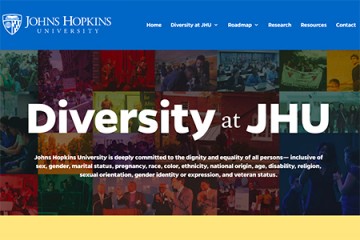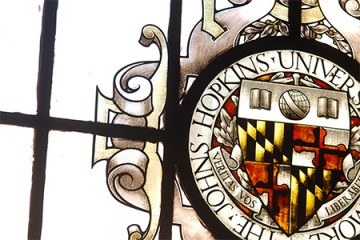Across Johns Hopkins University's academic divisions, program leaders and deans have expressed their commitment to institute best practices for attracting, recruiting, and retaining an excellent and diverse pool of graduate students. A new report released today by the Office of the Provost will help inform their efforts by detailing the composition of the university's graduate student body by academic division and department.
In an approach similar to the JHU Report on Faculty Composition, the JHU Report on Graduate Student Diversity creates a baseline for measuring progress in diversifying the populations of PhD, other doctoral, and master's degree students. The report, which will be updated every two years, uses data provided by students upon enrollment and compiled by the Office of Institutional Research.
"This report is an important tool to measure and understand diversity among our graduate students," says Provost Sunil Kumar. "With these numbers in hand, the departments and divisions can assess their progress and we can provide transparent information to the university community about our challenges and successes."
Among the reported data, in 2016-17, women made up 46 percent of PhD students, 58 percent of other doctoral students, and 53 percent of master's students universitywide. The School of Nursing had the highest percentages of women students, and has been working to increase diversity by enrolling more men. The School of Education and the Bloomberg School of Public Health exceeded 50 percent women in PhD, other doctoral, and master's degree programs.
Students who self-identified as minorities made up 20 percent of PhD students, 40 percent of other doctoral students, and 26 percent of master's degree students in 2016-17. Between 2008 and 2016, the percentage of underrepresented minorities—defined as Hispanic, Black, American Indian, and Alaskan Native/Pacific Islander—increased universitywide from 7 percent to 9 percent in PhD programs, and from 13 percent to 15 percent in master's programs.
Of note, the proportion of Nursing PhD students who are underrepresented minorities increased from 5 percent to 24 percent between 2008 and 2016, while the percentage of underrepresented minority PhD students at the Krieger School of Arts and Sciences increased from 4 percent to 7 percent. Among master's degree students, the School of Education saw the largest percentage increase among underrepresented minorities, from 19 percent to 34 percent.
The university has made a number of efforts to increase recruitment of a more diverse graduate student body, including several steps that were outlined in the university's Roadmap on Diversity and Inclusion. Among the efforts that proved helpful were a doctoral program directors diversity workshop held in the fall, the increased involvement by deans of diversity in the recruitment process of underrepresented minority students, and improved summer research opportunities at several of the divisions.
In support of all the academic divisions, Johns Hopkins has applied for membership in the National Name Exchange, a consortium of universities that share the names of underrepresented minority students to support their enrollment in graduate education. The university has applied to establish a chapter of the Edward Bouchet Graduate Honor Society, which focuses on individuals from diverse backgrounds.
Also, the university is participating in the Leadership Alliance, which brings higher education institutions together to offer training and mentorship to a diverse group of students who are preparing for graduate programs.
Posted in University News, News+Info
Tagged diversity










